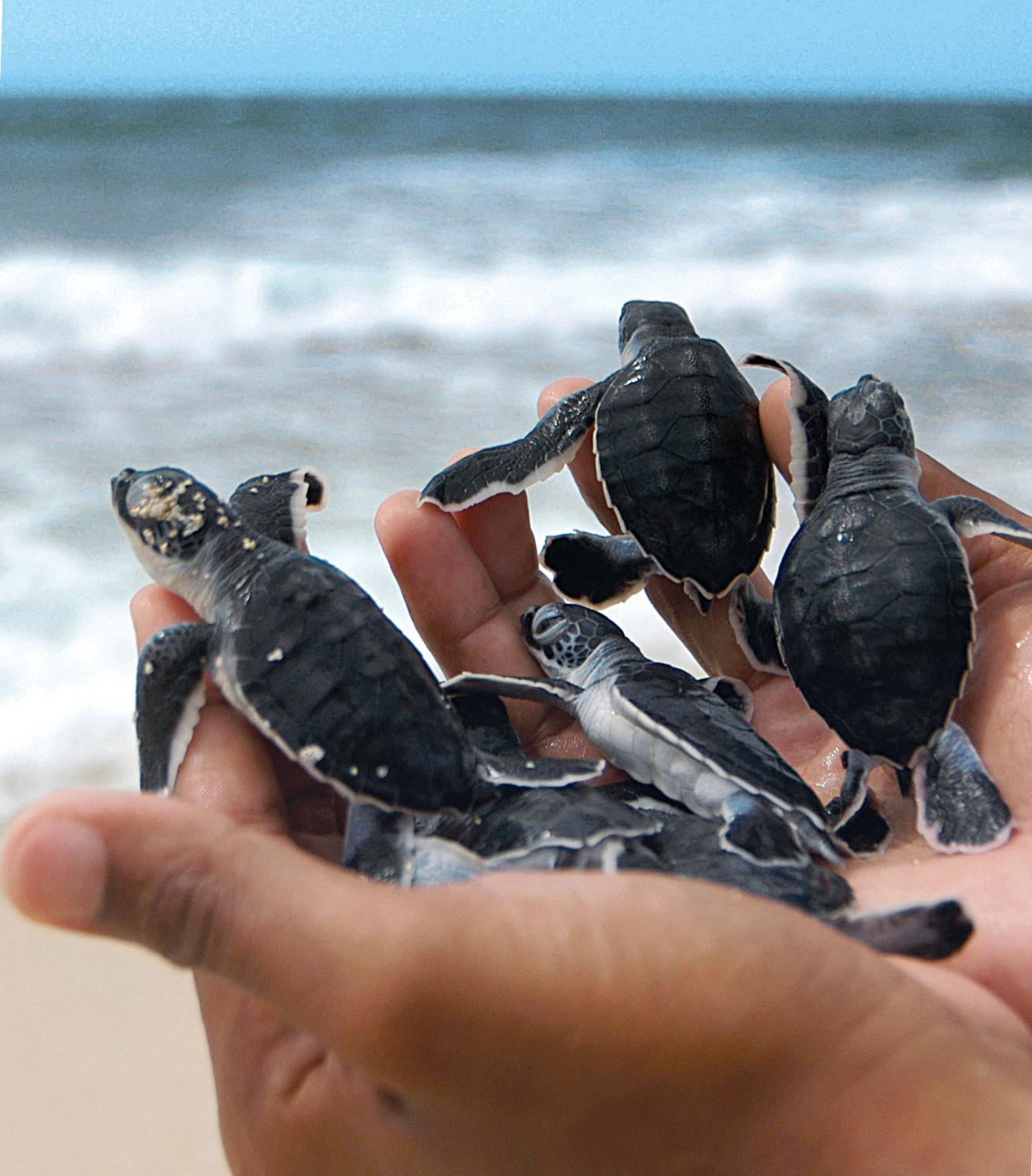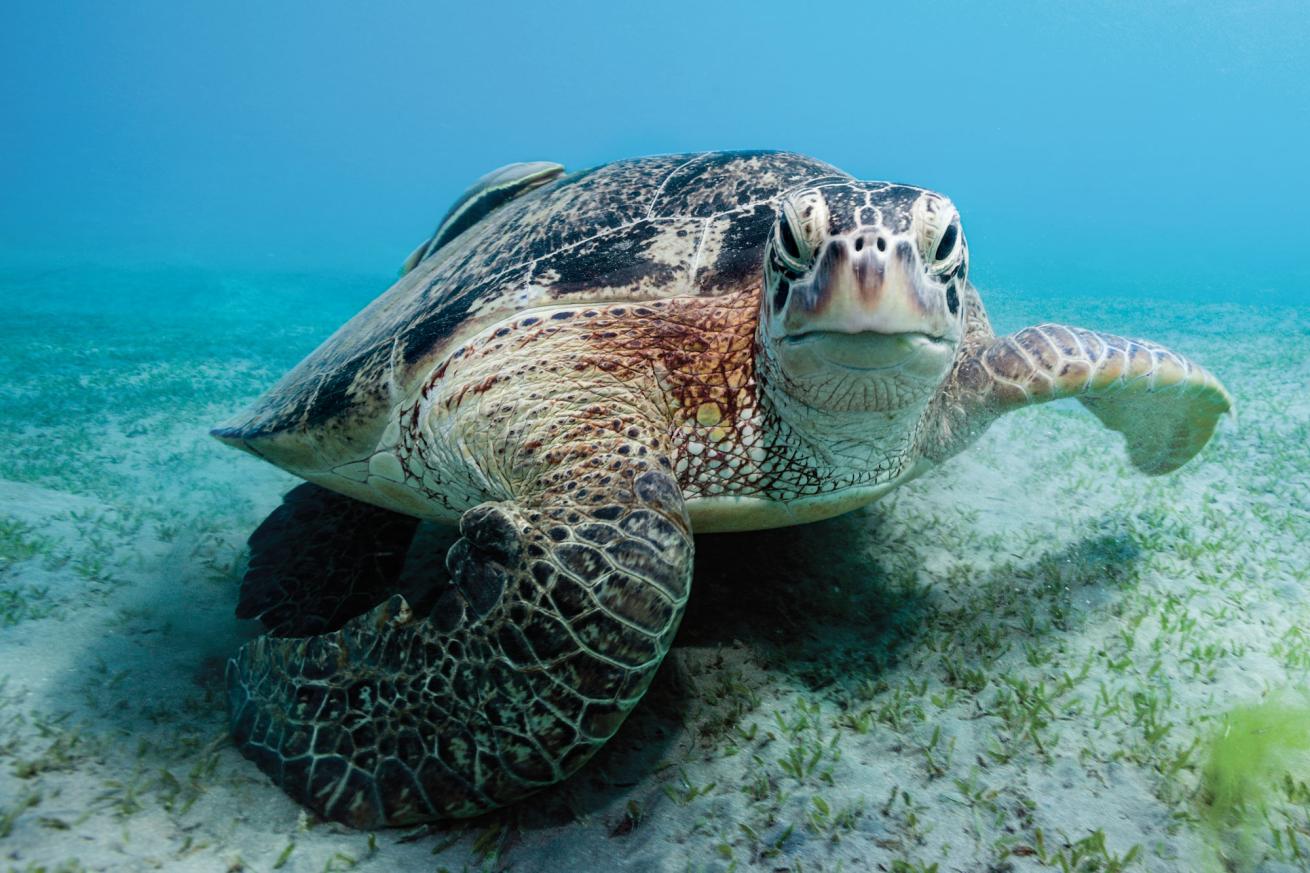Scientists Photograph Sea Turtles to ID Them

STR/AFP/Getty ImagesCuban scientists hope that photographs can help them keep track of turtles that hatch in Guanahacabibes.
The Guanahacabibes Peninsula juts from the western tip of Cuba like the open mouth of an eel. A national park and UNESCO Biosphere Reserve containing forest, thickets, swamps and mangroves cover its jaws; under the clear blue waters between them live 39 species of sponges, 27 gorgonians, 38 corals, and more than 200 species of fish.
Endangered sea turtles nest here and, for more than 15 years, scientists have monitored nine of these nesting beaches. Each summer, students from the University of Havana spend two weeks documenting the number of nests — typically several hundred in a season — and the number of eggs that hatch.
Research here and elsewhere in Cuba provides important data for sea-turtle conservation and management throughout the Caribbean, says Daria Siciliano, lead scientist for the Ocean Foundation’s Cuba Marine Research and Conservation program, which supports scientific collaboration between Cuba and the United States.
Scientists at Guanahacabibes also tag these nesting sea turtles, attaching a numbered metal clip to a flipper, in a similar manner to piercing an ear with an earring. Around the world, researchers use these tags to track individual sea turtles, estimate population size, and monitor reproductive behavior, such as how often a female nests in a season. Tags can also reveal an animal’s fate if, for example, it’s accidentally caught in a fishing net or washes up dead on a beach.

But tagging isn’t without drawbacks. Capturing and handling a sea turtle and attaching the tag can stress the animal, and some research suggests that tags can create additional drag while the animal is swimming. Tags can also fall off. And in this remote region of Cuba, transportation difficulties and occasional equipment shortages mean there aren’t always enough tags available.
As a result, Cuban scientists decided to test whether they could identify individual sea turtles by recording their facial markings and distinctive features, such as scars and spots, via photographs.
Julia Azanza Ricardo, formerly of the University of Havana Center for Marine Science and now at Cuba’s Higher Institute of Technology and Applied Science, led the study. Once a female had finished nesting, researchers took photographs of the right side of her head and analyzed the photos, recording distinguishing features such as an atypical head shape, the presence and shape of spots, and the characteristics of scales behind her eyes. Finally, they counted the rows of scales, and scales in each row on the right side of the head, and used these numbers to create a code for each animal. Their work demonstrated that photographs can accurately identify individual animals.
Those involved in the Guanahacabibes project are excited about recent changes in travel restrictions and efforts to re-establish diplomatic relations between the United States and Cuba. “Some of the logistics of collaboration with scientists in Cuba will be much easier,” Siciliano says. “It will be easier to take equipment to Cuba, for example, and to provide financial support. Before, we couldn’t send money in advance for scientists to buy equipment or supplies — we had to physically take cash.”










